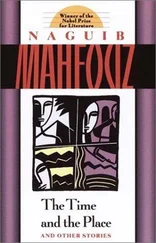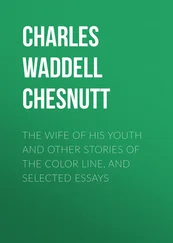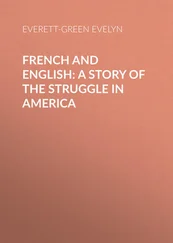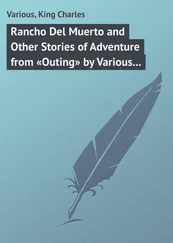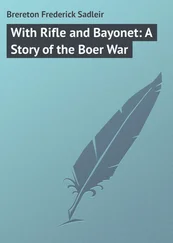Regardless, after 48 hours I animated them with holy words and dead man’s blood, and before you know it, they’re stomping up and down the corridors, carrying equipment, cleaning up after surgeries, performing just like they should. I was all ready to give you guys a great write-up on Yelp, when I started to notice odd behavior.
I was checking on the progress of my current crop of subjects when I noticed that there was a Golem stooped over a cage. At first I thought he was cleaning, but he actually seemed to be looking at the hybrid inside. I came closer and saw the Golem and the hybrid were making eye contact. At the time, I chalked it up to the markedly human appearance of the hybrid’s face-admittedly quite an achievement, which took a number of tries for me to accomplish. I caught the Golem’s attention and got it moving, mostly using hand commands as the hybrid started a mewling scream/howl that made quite a racket. The vocal cords on that one were also tricky, but I’ve been making good progress in that area as well. Promising test subject, but it didn’t work out.
So a few days later, I decided to try a new batch of hybrids. I liquidated the old crop and left the Golems to clean up. When I took the fire-hounds out for a run, I passed an open pit where the Golems were disposing of the non-viable human/hyena hybrids, and instead of a pile of refuse, everything was laid out carefully, covered with a light layer of dirt. And here’s the crazy part: there were flowers scattered over them. At first I thought that the villagers had snuck onto the grounds of Maderagon Mansion, but security reported no breeches of the perimeter fence. So it must have been done by someone inside the compound.
Do I have your attention yet, Joachim?
The other twelve Golems in the brood appear normal. But this one—this Alpha-7—seems to almost show emotion. Oh, I know its face is hardened clay, but it manages to convey something with its, I don’t know, its body language, I guess.
When I talked to your tech support people they said that when Golem broods are created, the feeder soul is divided into such small portions that emotions shouldn’t register in the least with any single Golem. But then I got out the manual—or rather opened the file, since you guys are too cheap to provide a paper manual any more. And I found this gem:
"…In rare instances, instead of simply welling up and then dissipating, the energy of the emotion somehow becomes trapped within the physical body of the Golem…Trapped emotions can become problematic, and should be addressed before contagion occurs."
Now what the hell does that mean? Because I’m wondering if a brood of 13 Golems is one soul divided up, and if one of them starts to feel emotions, is there a ripple effect with the others? If that’s the case, Joachim, I’m going to want to have this entire brood replaced, and no, I will NOT be paying the shipping to return them.
What the? There’s a breech in the hybrid containment area.
…all my work…Joachim, if your malfunctioning product—
What the hell is going on?
That…That should be security. Call me asap, Joachim, and let’s get this thing resolved.
Coming! I’m coming you don’t need to break down the—
End of voicemail.
A Revolution In Four Courses
Originally published by Daily Science Fiction, June 2015
Rathwan’s in Kur district is a study in white on white, the floor tile and tables arranged in a tessellation of rectangles whose sides matched the holy ratio of seven to three. Rathwan’s is empty today, save for one table, one lone guest—the Gedt general whose soldiers now pillage and loot the silk strewn arbors of the district.
Rathwan himself serves the dish to the general. The first course, serving to awaken memory, served on a square of carved bone. The conflict of square and rectangle is played out in the arrangement of paper thin shavings of smoked river fen. The delicate pink flesh of the fish is accompanied by thin curls of plum rind, their astringency balancing the inherent sweetness of the fillet.
The general’s arm is swift as a sword thrust, scattering the plate and the subtle shavings of fen into the air. One of them lands on Rathwan’s lips, hanging open in surprise. The general gets up and leaves, a smirk on his lips. At the door, he turns his head slightly toward Rathwan.
"So much effort for a plate of food, and so little when our swords clashed. That is why you have lost your city."
Rathwan watches the general melt into the sea of soldiers outside, and shudders.
While the first course awakened a wash of memory, the second course was always of the now, living in the extremity of experience. Few Mahaali attend tonight’s meal. Once the soldiers slipped away, the rats came, the rabble of Gedt nobility, hungry for property. They purchased the stacked quarters and marble tiled avenues of the district, famed for its brightly colored pennants and exquisite cuisine.
Rathwan serves Rakh es Fatai to a quizzical Gedt. Small orbs of seared rabbit skin filled with garlic smoke, tied by an aromatic twist of herbs. The textural transition when the orb bursts inside one’s mouth is intended to signify moments in one’s life when shifts and changes happen on the instant, like Kur district the day after the general left. So soon were the old banners and pendants hidden away. So quickly were the ceremonial candles of the great temple snuffed.
The Gedt customer complains to his friend as Rathwan walks away.
"I was told this was the finest establishment in the city, but it’s so tired, so traditional. A little Gedt touch couldn’t hurt, perhaps even more than a little."
Wine addled laughter follows. Rathwan watches the disappearing flower of Mahaali tradition, its petals peeling off into the wind.
The Mahaali citizen is dressed in the Gedt style, but the cut of his hair and the tattoos along his wrist signify his cultural heritage. He seems nervous. All of the old Mahaali are in these times. They disappear, slowly, with no cause. There is talk of a pogrom. But it is a quiet pogrom, a silent ghostly pogrom. The third course is always a pause, a place to breathe before the weight of the next.
Rathwan serves him a rendition of Mahaali rice, stewed with smoked nettles. Rathwan has altered it to serve the tastes of his clientele, now mostly Gedt. He replaced the artistry of structure and form with a striving for essence, attempting to adopt the Gedt philosophies of cuisine while retaining the origins that belied the dish.
The citizen looks at the dish, and then looks into Rathwan’s eyes. There is judgement there, anger as well, but the hardest of all for Rathwan to stomach, is the pity. The citizen bends down again, his brief flaring of passion over. He whispers almost impercetibly,
"And yet more is lost."
Rathwan sits in his empty kitchen. A plate of gelled tuber sits before him, lightly salted translucent cubes mirroring the color of spring moss. It is a Mahaali dish in color, in form and in its historical allegory, touching back to the time when Mahaal was occupied by neighboring Sahwat. The dish had been served in back rooms and passageways, created to remind the Mahaali of their own history with the most simplest of preparations. There are none but him to eat it in Kur district today. None but Rathwan to appreciate the weight of the dish’s long past. Tomorrow the Gedt general would come again to Rathwan’s.
Puffer fish has always been a stalwart of the fourth course. The poison sacs of the fish are a deadly toxin, prized in dilute quantities in rougher districts as a mild hallucinogen. Cleaned of the poison, the fish is quite sublime, a subtle balance of texture and flavor.
Читать дальше

